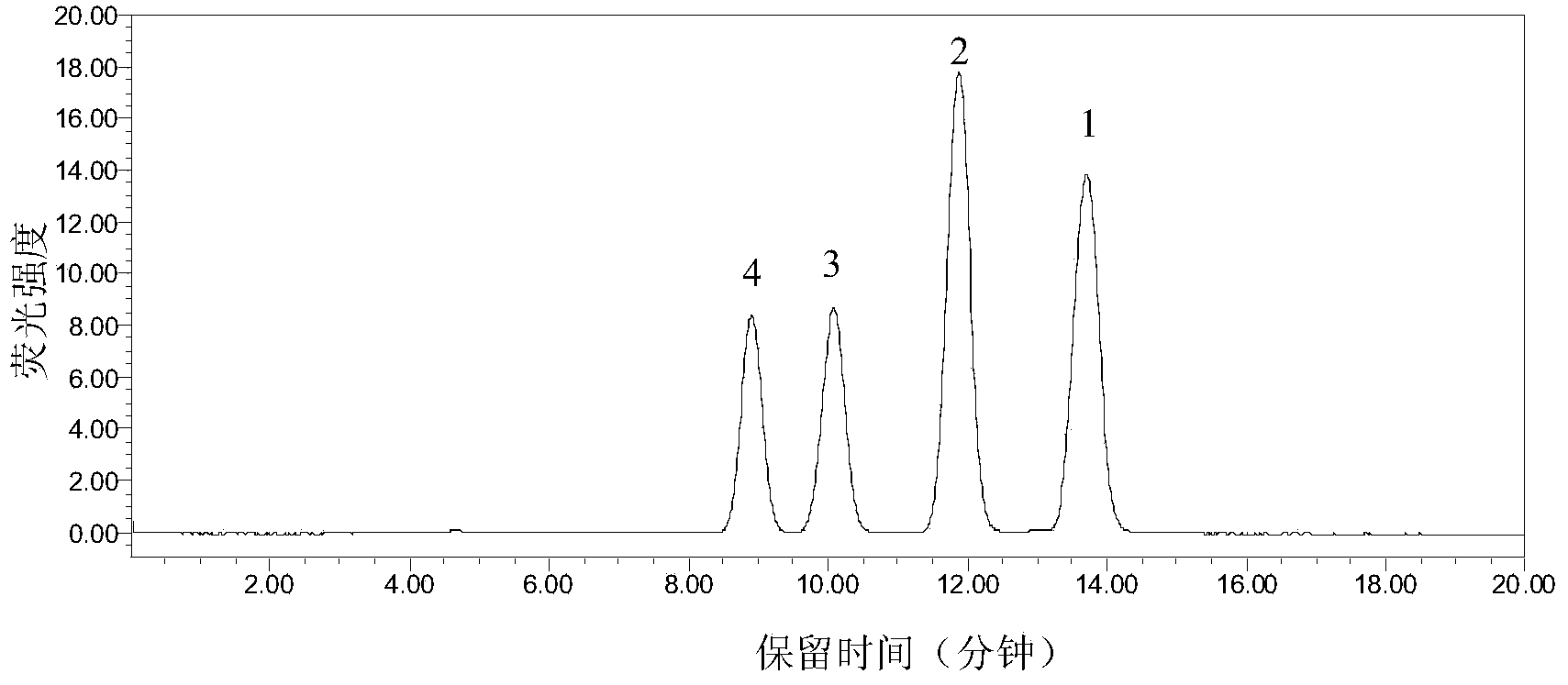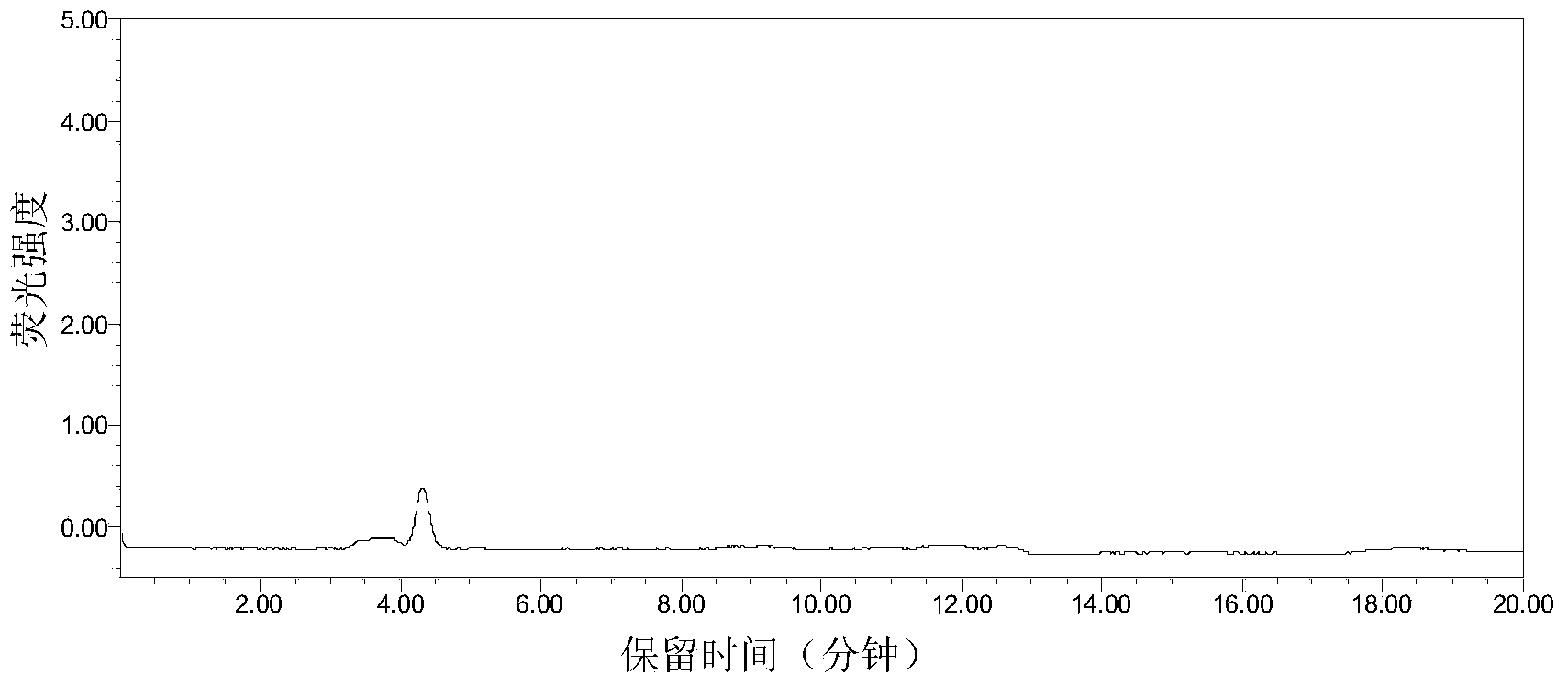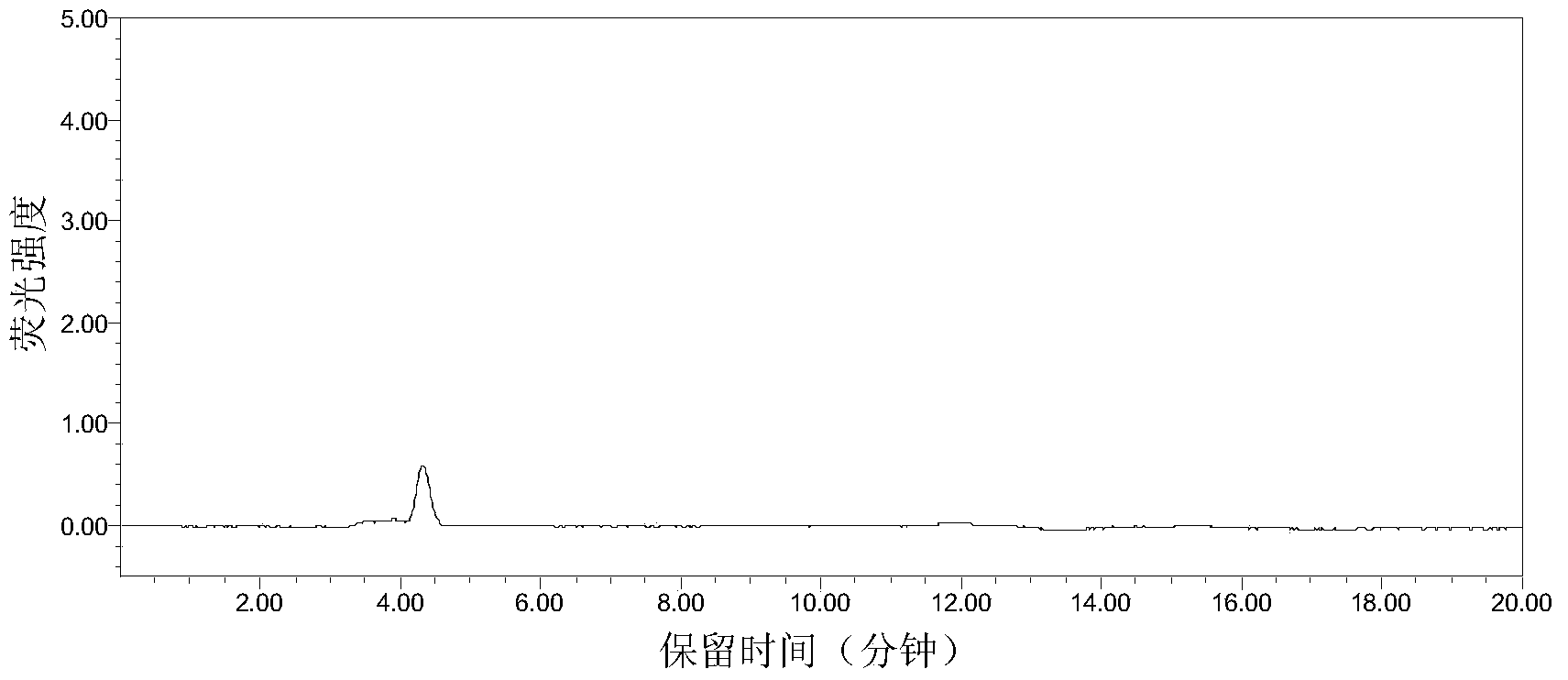Aspergillus flavus mixed strain incapable of producing aflatoxin and application thereof
A technology of aflatoxin and mixed strains, applied in the direction of application, fungi, methods of using spores, etc.
- Summary
- Abstract
- Description
- Claims
- Application Information
AI Technical Summary
Problems solved by technology
Method used
Image
Examples
Embodiment 1
[0066] The collection, separation, identification of embodiment 1, Aspergillus flavus strain AF-8 and AF-20
[0067] 1. Isolation of Aspergillus flavus strains AF-8 and AF-20 from peanut planting soil
[0068] AF-8 and AF-20 were used to isolate Aspergillus flavus strains from peanut planting soil in Hubei and Shandong provinces using DG18 medium. The specific operation is as follows:
[0069] 1. Preparation of soil sample bacterial suspension
[0070] Take 10g of soil sample, add 90mL of 0.1% peptone sterile water (w / v), shake at room temperature for 30min, and make 10 -1 bacteria suspension; then take 0.5mL10 -1 Add 4.5mL0.1% peptone sterile water to the bacterial suspension to prepare 10 -2 Bacteria suspension of dilution; prepare 10 as above -3 diluted bacterial suspension.
[0071] 2. Isolation and purification of strains
[0072] Take 0.1mL bacterial solution for each dilution, spread it on DG18 medium (recipe: 5.0g casein peptone, 10.0g anhydrous glucose, 1.0g po...
Embodiment 2
[0092] Identification of aflatoxin synthesis gene deletion in embodiment 2, Aspergillus flavus (Aspergillus flavus) AF-8 and AF-20
[0093] The inventors of the present invention have designed four pairs of primers for the toxin synthesis-related genes hypB, hypC, hypD and hypE with reference to the sequence of the toxin synthesis gene of Aspergillus flavus with the Genbank accession number AY510451. The primers of other genes refer to Perng-Kuang Chang (Chang , P.K., Horn, B.W. and Dorner, J.W. (2005) Sequence breakpoints in the aflatoxin biosynthesis gene cluster and flanking regions in nonaflatoxigenic Aspergillus flavus isolates. Fungal Genet Bio42, 914–923.). The 29 genes to be tested and their corresponding primer sequences are shown in Table 1.
[0094] Table 1 Primer sequences of different aflatoxin synthesis genes
[0095]
[0096]
[0097] Genomic DNA of Aspergillus flavus (Aspergillus flavus) AF-8CGMCC NO.8964 and Aspergillus flavus (Aspergillus flavus) AF-20...
Embodiment 3
[0103] Embodiment 3, Aspergillus flavus (Aspergillus flavus) mixed strain " AF-8+AF-20 " is to the inhibitory action of the Aspergillus flavus that produces aflatoxin in peanut
[0104] 1. Experimental method
[0105] (1) Preparation of peanuts
[0106] Select complete and undamaged peanut particles, then weigh 10g of peanuts of uniform size, disinfect the surface with 75% alcohol for 2min, dry them with sterile filter paper and put them into a sterilized 150ml Erlenmeyer flask; The moisture content in the bottle was adjusted to 25% (mass percentage), and the bottle was sealed with a biological safety film, and cultivated at 30°C for 7 days in a constant temperature and humidity chamber in the dark to observe the effect of surface disinfection. The results show that there is no growth of any miscellaneous bacteria on the surface of peanuts, and this method will be used for surface disinfection of samples in subsequent tests.
[0107] (2) Preparation of bacterial suspension ...
PUM
 Login to View More
Login to View More Abstract
Description
Claims
Application Information
 Login to View More
Login to View More - R&D
- Intellectual Property
- Life Sciences
- Materials
- Tech Scout
- Unparalleled Data Quality
- Higher Quality Content
- 60% Fewer Hallucinations
Browse by: Latest US Patents, China's latest patents, Technical Efficacy Thesaurus, Application Domain, Technology Topic, Popular Technical Reports.
© 2025 PatSnap. All rights reserved.Legal|Privacy policy|Modern Slavery Act Transparency Statement|Sitemap|About US| Contact US: help@patsnap.com



